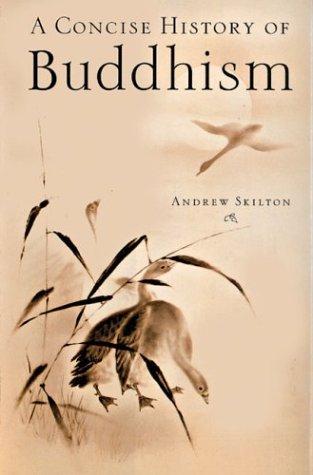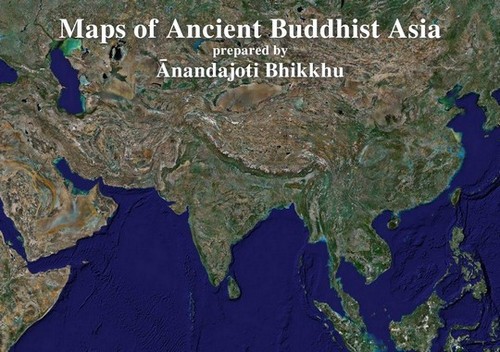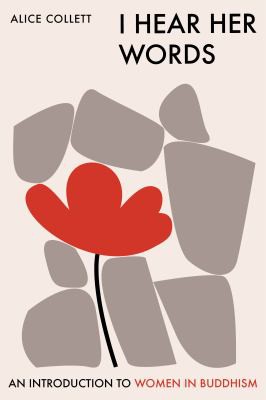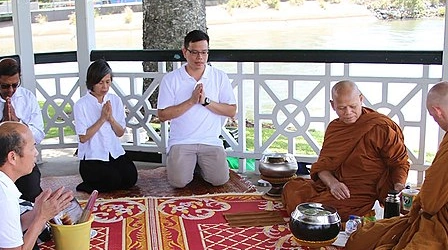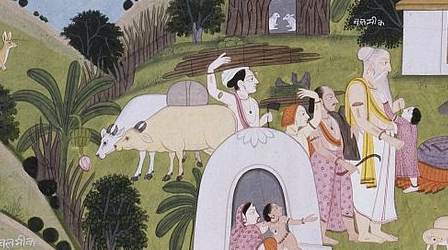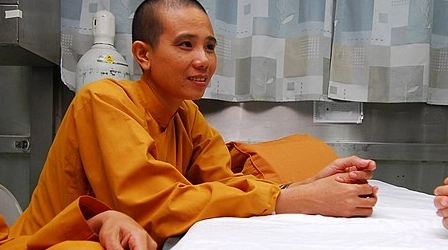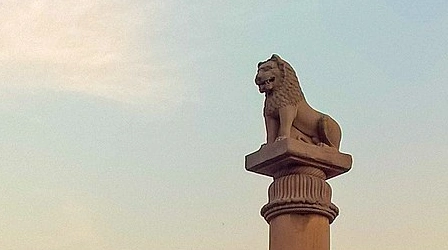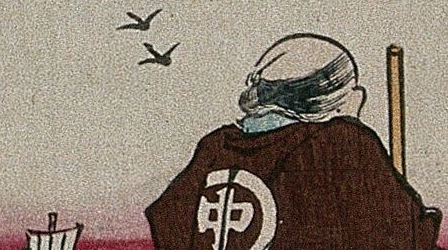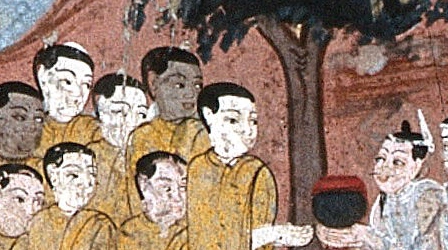The History of Buddhism
Subscribe to this topic via: RSS
The pan-sectarian arc of Buddhist history, from the life of the Buddha to modern Buddhism.
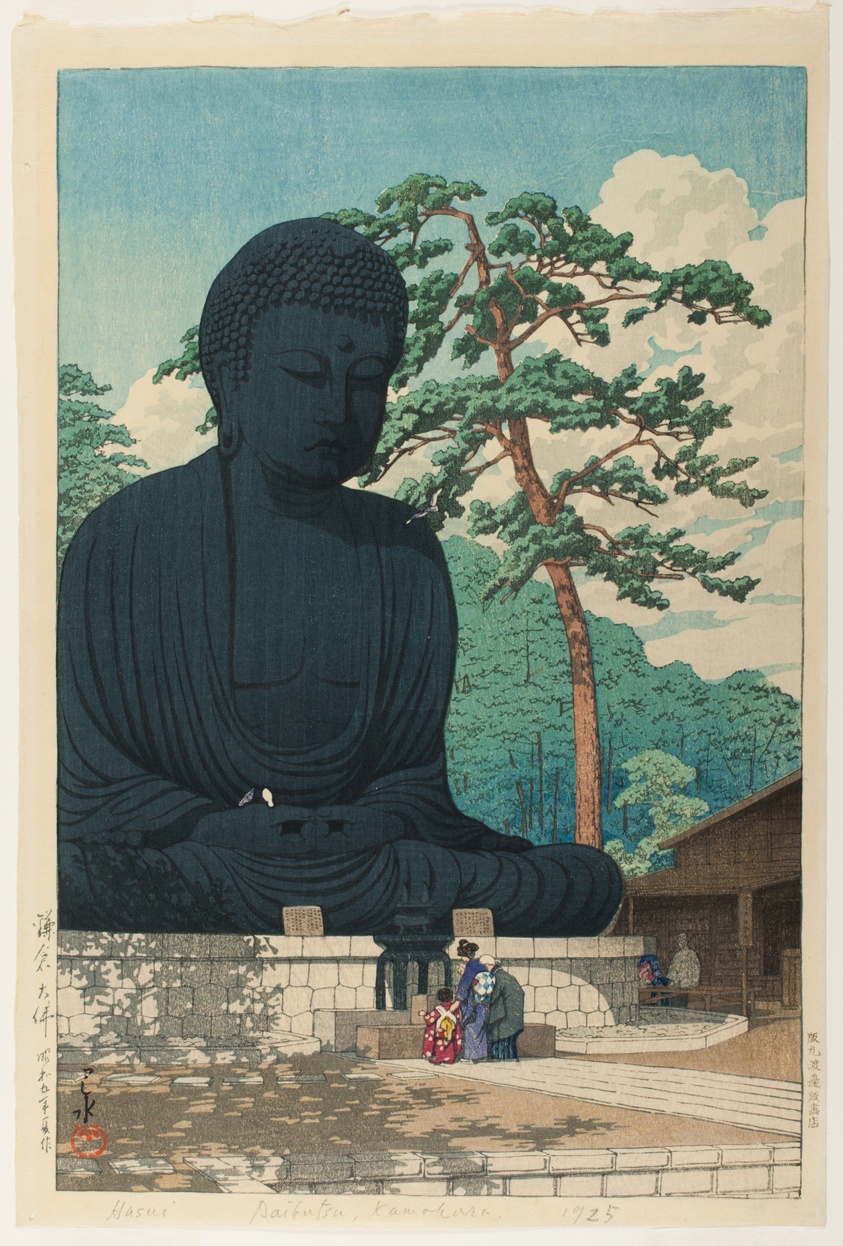
A postcard from 1925 shows a family in traditional garb paying their respects to a large, 13th century Bronze statue of the Buddha in Kamakura, Japan. (Public Domain, courtesy of The Art Institute of Chicago)
Table of Contents
Books (10)
Featured:
-
260 pages
-
222 pages[recommended but under copyright]
See also:
Canonical Works (8)
Featured:
-
⭐ Recommended
Just as, Kassapa, gold does not disappear so long as counterfeit gold has not arisen in the world, but when counterfeit gold arises then true gold disappears, so the true Dhamma does not disappear so long as a counterfeit of the true Dhamma has not arisen in the world, but when a counterfeit of the true Dhamma arises in the world, then the true Dhamma disappears.
-
He should dedicate an offering
To the deities there.
Venerated, they venerate him -
I offered eight fallen flowers to the stupa…
See also:
Readings (47)
Featured:
-
🥇 Best of
… what was the religious environment that encouraged the spread of the new technology of printing in late seventh century China?
-
⭐ Recommended
Despite being cultural aliens, the nomads were aware of the superior literary and cultural tradition of the Chinese with whom they came into contact. Accepting the Confucian tradition and Chinese ways, however, would have meant subsuming their military superiority to and separateness from those they conquered. Instead, most nomadic rulers chose to adopt Buddhism as an alternative cultural policy.
-
🥇 Best of
Reverend Sirs, I would like the reverend bhikkhus and bhikkhunis—as well as the laymen and laywomen—to listen to these passages frequently and to ponder on them.
-
⭐ Recommended
What was the response of Soto Buddhist priests to the social situation facing Japan at the beginning of the twentieth century? What influence did their religious background have on their responses to the modernization of Japan? This article examines the lives and thought of two Japanese Soto Buddhist priests-Takeda Hanshi and Uchiyama Gudo-both with the same religious training and tradition, yet who chose diametrically opposite responses.
-
⭐ Recommended
The way the denizens of the ancient Indian pantheon appear in early Buddhist texts exemplifies a mode of thought that scholars have called “inclusivism”.
-
… there was nothing “private” about either the king’s support of Buddhist communities, or the claims and requests that Buddhist intellectuals made of the king.
-
⭐ Recommended
In the early decades of the twentieth century, as Japanese society became engulfed in war and increasing nationalism, the majority of Buddhist leaders and institutions capitulated to the status quo. One notable exception to this trend, however, was the Shinko Bukkyo Seinen Domei (Youth League for Revitalizing Buddhism), founded on 5 April 1931.
-
Rather than the texts of a distinct form of Buddhism, it is better to regard them as a controversial class of text that spread within pre-existing Buddhist institutional structures.
-
Having been the greatest worldly ruler, her final and enlightened form is of a female ascetic by choice
-
⭐ Recommended
A period of disorientation or depression is a small price to pay for more accurate knowledge.
-
⭐ Recommended
After they migrated into the oasis cities on the Silk Route in the latter half of the ninth century, some remained Manichaeans. Some aristocratic Uigurs converted to Christianity when they encountered Nestorian missionaries. However, the majority of Uigurs, including common people, became Buddhists.
-
Being unfamiliar with tantra, they cannot recognize that what they’re looking at has a tantric origin, and they may think of it as simply (unproblematically) part of whatever tradition they are looking at…
-
⭐ Recommended
By the turn of the century, at least in Sri Lanka, the Buddhists no longer welcomed the white man who sought to speak on their behalf. They could speak for themselves, in English.
-
🥇 Best of
Only a man could dream of Heaven as a place where he can lie about all day, surrounded by beautiful women
-
An exploration of the Buddhist caves of Western India, and what the historical record there can tell us about how Buddhism was received as it spread.
-
This essay takes up how state regulation of religion was managed by Soto Zen Buddhism, with particular attention given to rules governing the clerical ranks and robes.
-
A joint archaeological and hydrological study revealed that the dams appear to have been designed not only with a sophisticated knowledge of dam engineering but also with an understanding of the principles of basin water balance. This raises important questions about the role of water resources management in the spread of institutionalized Buddhism and accelerated urban growth in ancient India.
-
I do not believe one is committed to fundamentalism by the simple recognition that some traditions are more stable or more systematic than others, and it is a serious anthropological question to ask why.
-
Tracks one fable as it moved out of India and through the Buddhist world, giving us a glimpse into both the historical places Buddhism spread to and the process of mythic assimilation.
-
Lanka’s pre-eminence was not a given, as by the early thirteenth century, the religious and intellectual centre began to shift towards Bagan in Myanmar. But the sudden decline of Bagan after the Mongol conquest at the end of the thirteenth century prevented the completion of Theravāda’s ‘great translocation’ to Southeast Asia.
-
What on earth is the Buddha’s life story doing disguised in the tale of a Christian saint?
-
A brief overview of the kinds of preservation and research work being done on the oldest manuscript fragments found in Central Asia.
-
Omission even in cases of variation is possible, where a sample gives an impression of the whole
-
Where, then, did this now pervasive idea come from that meditation lies at the heart of Buddhist life?
See also:
Audio/Video (18)
Featured:
-
A day of lectures on the history of Buddhism which led off a series of lectures on Early Buddhism.
4h 25m -
🥇 Best of
To understand Buddhism, one must understand the tension between the knowledge of impermanence and the love of the Dharma. This sense of loss has defined Buddhism from the Buddha’s Parinirvana through to the present day.
68 min -
⭐ Recommended
How Abel-Rémusat’s “poaching” of Asian scholarship facilitated the creation of Western “Buddhist Studies” as a discipline and how his Relation des Royaumes Bouddhiques was in turn coopted by Himalayan Buddhists fighting in the collapse of the Qing says a lot about the production of academic knowledge.
1h 34m -
Venerable Analayo tells us how he thinks about the study of Buddhist history and its texts.
-
⭐ Recommended
An excellent walk-through of the classical Indian philosophies of language: from the Sanskrit grammars of Panini and Patanjali, to Brahmanical realism, Buddhist skepticism, and Jain agnosticism.
65 min -

-
On taking seriously the study of the vernacular, Theravāda arts and what they tell us about pre-modern Buddhism in Southeast Asia.
1h 38m -
A less one-sided account of Buddhism’s decline in medieval Indian.
-
 10 min
10 min
See also:
